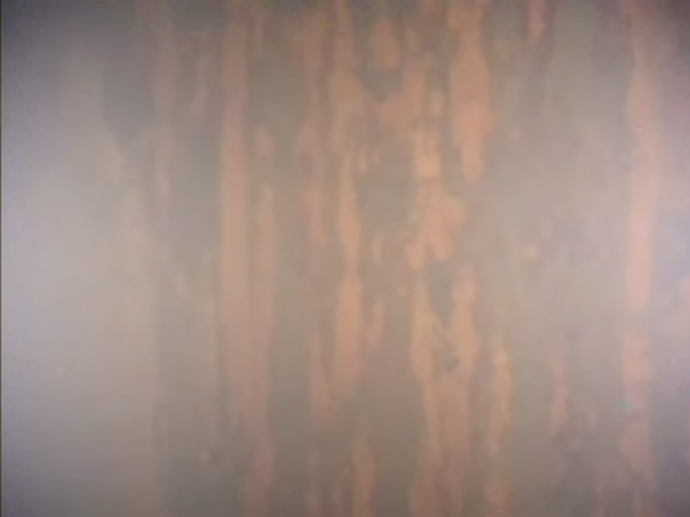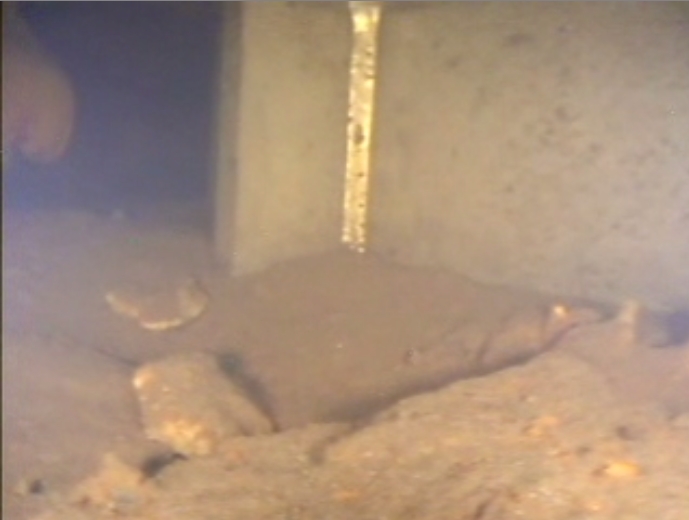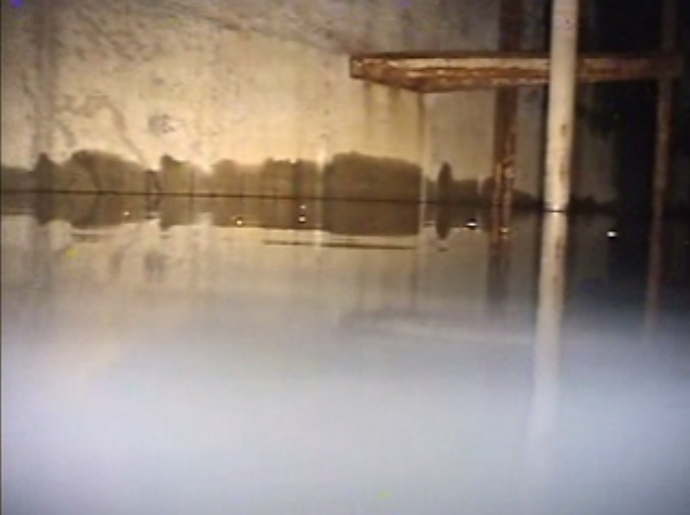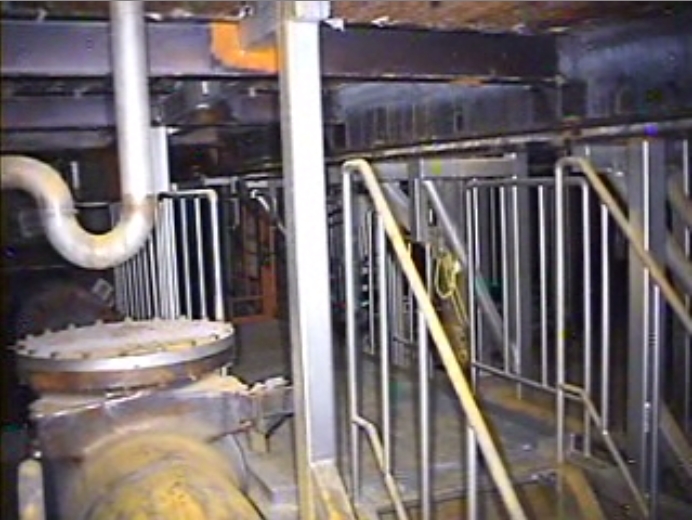Workers lowered the video camera, thermometer, and dosimeter through the hole on the first floor of Reactor 1 building in the 2 to 10 millisieverts/hour environment.
Water is murky, 4.9-meter deep from the torus room floor. TEPCO said in the 2/20/2013 handout (in Japanese; there is no English handout) that visibility was about 60 centimeters.
From TEPCO's Photos and Videos 2/21/2013, with brief explanations of the photos from the Japanese version:
Suppression Chamber wall (OP 3200, in the water):
Torus room floor (OP -800):
Water surface (OP 3700):
Torus room ceiling (OP 7700):
(OP is "Onahama Peil", average sea level used for the plant. The numbers are in millimeters. So, OP 3700 means the level is 3700 millimeters (or 3.7 meters) above the sea level.)
It is stating the obvious, but it nonetheless did not occurred to me until I read the comment from the blog reader Atomfritz - that the Reactor 1's Suppression Chamber is also broken.
TEPCO's video shows (from 35 to 45 seconds in the video) a large pile of sediments on the torus room floor under water:







 Tokyo Time
Tokyo Time
![[Most Recent Quotes from www.kitco.com]](http://www.kitconet.com/charts/metals/gold/t24_au_en_usoz_2.gif)


9 comments:
Uh...what is that crap?
That blob struck me as corium but they have a different name for it (MCCI = Molten Core Concrete Interaction) when melted fuel mixes and consumes the surrounding environment i.e. piping & metals, concrete, equipment and such. Could be a flow that crusted as it cooled or a piece that dropped in.
Haven't seen TEPCO pics or vids with that type of texture before but TEPCO is referencing known core melts fragments and showing possible melted blob location in their drawings, I guess it is the only way to account for radiation readings. The immediate air and water should be sampled for return of obvious clues.
Please, Ultraman, what "OP" 3200 or 3700 means (for translation).
Thank you.
The debris shown seem more likely to be earthquake derived and from the walls rather than the core. After all, the visibility is only a couple of feet and the camera was imserted close to the walls, well outside the torus and thus many yards away from the reactor vessel.
What is surprising is the debris is like sand or silt, which really does not fit with earthquake rubble. Nor should wall debris be more radioactive than the cooling water.
Do we have powdered reactor fuel residues flushed from the core accumulating in the corners of the torus room?
OP is reference sea level
Helios, I updated the post with info.
OP is "Onahama Peil", average sea level used for the plant. The numbers are in millimeters. So, OP 3700 means the level is 3700 millimeters (or 3.7 meters) above the sea level.
Without a reference to know the size, I don't know, could it be residue generated when they drilled the hole to get the camera in?
Clumsy they may be, I doubt that they dropped the concrete debris from drilling the hole. They've collected the sample. See my latest post. http://ex-skf.blogspot.com/2013/02/fukushima-i-nuke-plant-sediment-sample.html
Thank you, Ultraman for the explanation.
Post a Comment